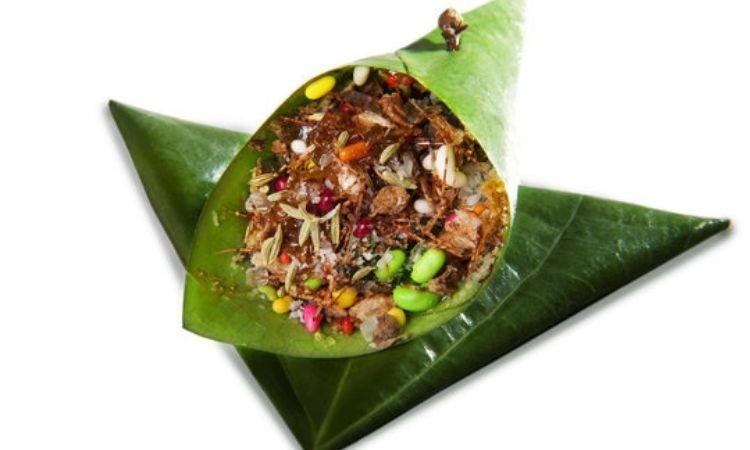
From the vibrant streets of Varanasi to the high-end lounges of metro cities, Pan Masala has journeyed through centuries of tradition, culture, and taste to become more than just a mouth freshener—it’s now an experience, a statement, and a sensory indulgence. With its unique blend of areca nut, catechu, cardamom, lime, and sweet or spicy flavorings, pan masala strikes a bold balance between legacy and lifestyle. It speaks volumes about the region’s culinary diversity, cultural nuances, and evolving preferences.
Expert View: Changing Perceptions and Trends
According to Expert Market Research, the evolution of India pan masala is driven by shifting consumer behavior, cultural continuity, and a growing appetite for premium and flavored variants. As awareness around health and lifestyle increases, many manufacturers are reformulating products to exclude tobacco, while still retaining the richness of traditional taste. Expert Market Research highlights the role of flavor innovation, packaging appeal, and regional branding in redefining how pan masala is perceived—moving it from a niche indulgence to a widely accepted, culturally rooted product. This transformation marks a significant shift in how traditional products are being adapted to fit contemporary expectations.
The Essence of Pan Masala
Pan masala is rooted deeply in the traditional Indian habit of paan chewing, an ancient practice used for both ritualistic and recreational purposes. Over time, the preparation of betel leaves, nuts, and condiments evolved into a more convenient, ready-to-consume mixture—pan masala. Unlike betel leaf-based paan, which needs fresh ingredients and careful preparation, pan masala offers the same essence in a compact, easy-to-carry format. It has gained popularity not only for its taste but also for its ability to refresh the palate, mask bad breath, and leave behind a lingering aromatic flavor.
Whether it’s the zesty kick of elaichi (cardamom) or the earthy undertones of supari (areca nut), pan masala is more than a product—it’s a curated flavor experience. It is shared in social gatherings, offered as a gesture of hospitality, and even cherished as part of post-meal rituals in homes and restaurants alike.
A Reflection of Culture and Identity
In many regions of India and South Asia, pan masala carries symbolic significance. It’s associated with hospitality, tradition, and status. In weddings, celebrations, and festivals, offering pan masala is as routine as serving sweets or tea. The product often comes in aesthetically designed tins or sachets, and some premium versions are even wrapped in gold foil, highlighting its place as a product of prestige and pleasure.
Beyond flavor, pan masala evokes nostalgia for many. Its scent, taste, and packaging often remind people of family rituals, long train journeys, or small talks outside local shops. It has become part of social identity—consumed with pride, talked about with enthusiasm, and passed around like a token of community.
Regional Spotlight: The Cultural Significance of India Pan Masala
In the heart of India, pan masala has not just survived generations—it has flourished. The India pan masala culture is incredibly diverse, with different regions having their own signature styles, ingredients, and fan bases. Northern states like Uttar Pradesh, Bihar, and Rajasthan are known for their strong, spicy blends, while western regions such as Gujarat and Maharashtra lean towards fragrant and sweet profiles.
In India, pan masala is embedded in daily life. It’s a conversation starter at street corners, a post-lunch ritual in offices, and a token of hospitality in homes. Many brands have even become household names, with loyal followings that span across states and age groups. The ease of accessibility—from local paan stalls to glossy supermarket shelves—further amplifies its presence. For millions, pan masala is not just a preference, it’s a part of their identity.
Flavor Meets Innovation
What sets pan masala apart in today’s landscape is how it’s adapting to modern sensibilities without losing its traditional charm. Contemporary versions come in sugar-free, low-lime, or even organic variants. Many producers are experimenting with exotic ingredients like saffron, silver leaves, and natural sweeteners to appeal to the upscale market. The packaging too has undergone a facelift—sleek pouches, resealable tins, and eco-conscious wrappers are now replacing the basic sachets of earlier times.
Innovation extends to the marketing front as well, where pan masala is endorsed by celebrities and positioned as a symbol of success, charisma, and confidence. Despite controversies surrounding its ingredients and public advertising, the product continues to maintain its stronghold due to deep cultural connections and ever-evolving formats.
A Flavor That Transcends Time
Despite changing tastes and modern alternatives, pan masala has held on to its audience with unwavering loyalty. It’s not just about chewing—it’s about savoring, socializing, and reminiscing. The versatility of pan masala—ranging from everyday variants to luxurious offerings—makes it a cultural phenomenon that transcends generations.
For many, the ritual of enjoying pan masala is intimate and habitual. The tear of the pouch, the burst of flavor, and the slow release of aroma create a sensory cycle that offers comfort and satisfaction. It’s that small yet impactful moment that fits into everyday life with effortless charm.

